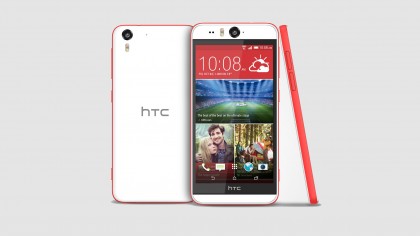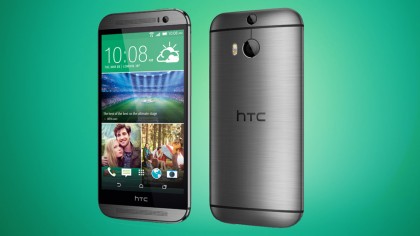HTC Desire Eye vs HTC One M8
It's an HTC showdown
Camera
Where the two phones really come together are there photographical features. Which one you buy is likely to depend on whether you prefer taking pictures of yourself or of other things.
The front-facing 13MP camera on the Desire Eye is equipped with a dual-LED flash and will outperform the 5MP front-facing camera on the HTC One M8 every time. Likewise, the rear-facing 13MP snapper on the Desire Eye is a match for the 4 UltraPixel rear-facing one on the One M8.
When it comes to just straight pictures, the Desire Eye has the edge here. However, the One M8 can boast of additional features, namely its Duo depth sensor that the Desire Eye is lacking. The Duo sense records distance from the object you're photographing and lets you re-focus after you've taken the image. How much you'll use it day-to-day is debatable, but if you like to get creative with your snaps, it can be a nice addition.

The One M8 also features HTC's ZOE application, that lets you take both video and still images at the same time - creating a short clip that you can pull the best still shot from.
Ultimately though, photography is what the Desire Eye is all about - it's front facing camera is not just better than the One M8's, but also every other Android phone on the market right now. If you want an HTC phone strictly for photography, then you're best to go with the Desire Eye.
Battery
Neither phone features a removable battery, so you're not going to be able to stock up on spares. Despite being launched back in March, the M8 can still claim a larger battery, at 2,600mAh, than the Desire Eye which only manages 2,400mAh.
What's more, given the larger screen size of the Desire Eye, it's likely to drink up power more quickly when you're out and about. We haven't explicitly tested this yet, but it's reasonable to assume that the HTC One M8 is the better choice when it comes to battery.
Sign up for breaking news, reviews, opinion, top tech deals, and more.
HTC has equipped both devices with an energy saving mode - a popular feature that was present on the HTC One M7. It's enough to keep each phone running for more than a day on a single charge but will obviously hamper what you can do with it.
Connectivity
As with any top smartphone, there's plenty of connectivity in both devices. Each only comes with one physical port - a microUSB slot located on the bottom for charging and copying media.
Thankfully, HTC has included a microSD slot in both devices letting you expand the storage with a card up to 128GB in size.

The rest of the connectivity is handled wirelessly; each offers Bluetooth 4.0, Wi-Fi, NFC and LTE 4G data connections. The HTC One M8 has CAT 6 LTE which theoretically makes it possible to hit 300mbps of data downloads over a 4G connection.
Quick verdict
Unless you're desperate to take a lot of selfies, or just use your phone predominantly for photography, we'd still recommend taking the HTC One M8 over the newer Desire Eye.
While specifications are much the same, the HTC One M8 is a beautiful phone, with great design and just the right 5-inch form factor. Losing the two inches of screen from the Desire Eye is something you can live with when your phone is sculpted from aluminum rather than polycarbonate.
Price, as always, is an issue to consider though and if you don't want to stump up for an M8 then the Eye is a perfectly acceptable fallback - giving you good HTC features like BlinkFeed at (what we hope is) a lesser price.
That being said, apart from the selfies, the HTC One M8 does everything the Desire Eye can do albeit in a nicer, more premium package.
- 1
- 2
Current page: HTC Desire Eye vs HTC One M8: page 2
Prev Page HTC Desire Eye vs HTC One M8: page 1